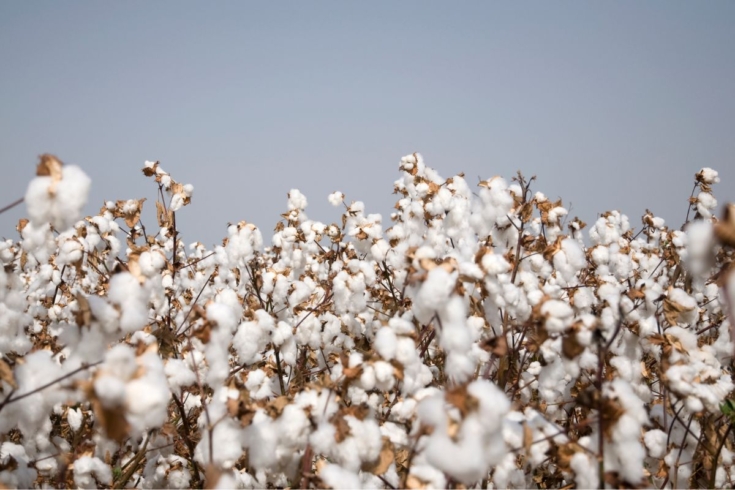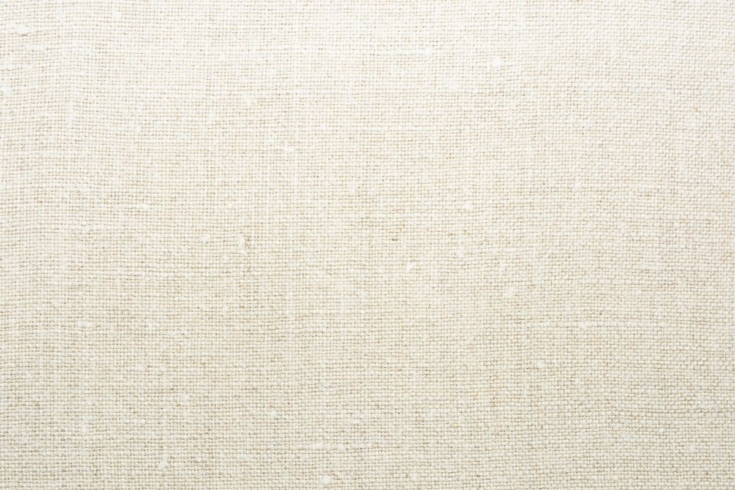As a result of the virtually unlimited availability of clothing, few of us give much thought to the consequences of our daily shopping choices or the sustainability of our clothing. Every day we browse platforms selling clothing – new, used luxury or chain. Whether we are discussing the case of the consumer, promotional or workwear market, we must be aware that the process of clothing production consists of many stages, and before our favorite basic t-shirt reaches our closet, it has to travel a very long way. Therefore, let’s stop for a moment and take a joint look at this long road, which is not indifferent to our planet.
Environmental impact of garment production
Let’s start with the fundamental basics – the material from which our clothes are made, such as T-shirts, sweatshirts and many others. A few of the most popular raw materials used during the production of clothing that each of us has probably heard of are cotton, polyester, wool, silk or linen. We can divide these raw materials into several groups (in terms of their source). Let’s focus on two basic ones – natural and synthetic.
The first group includes all materials for the manufacture of which yarn of natural origin (plant or animal) has been used. The base raw material is harvested, properly prepared and subjected to a number of processes that make it possible to make yarn from it – a long thread that is used in the industrial production of the material (knitted or woven).
Group two is synthetics, which has a very similar process with one key difference – the raw material itself has to be produced artificially and industrially, which puts a strong stamp on the environment even at the early stages of the production chain.
We can also point out sizable differences between the two groups above on issues of carbon footprint, water consumption, use of pesticides and other chemicals, and greenhouse gas emissions.
Types of materials in sustainable fashion
Systematizing the elementary issues, the question is how can we consciously identify and choose clothes made of more environmentally friendly raw materials? Let’s discuss some examples of natural raw materials that we can look for in stores when shopping.
Organic cotton vs. garment manufacturing
Organic cotton is a type of cotton grown without the use of artificial chemicals such as pesticides, herbicides or synthetic fertilizers. The production of organic cotton is based on natural agricultural methods that aim to preserve ecological balance, protect the environment and human health. Its main features are:
- No chemicals – Its crops use only natural pesticides like compost, manure and other natural fertilizers.
- Protecting biod iversity – Its crops promote biodiversity conservation, as farmers often use crop rotation and mixed cropping, which increases species diversity and improves soil health.
- Lower environmental impact – Its production uses less water and energy compared to conventional cotton. Soils for organic crops are more fertile and have a higher water-holding capacity, further reducing water consumption.
Organic cotton is becoming increasingly popular in the apparel industry due to growing consumer interest in sustainable and eco-friendly products. Organic cotton garments are prized for their softness, hypoallergenicity and lack of toxic chemical residues, making them safer for the skin.

Hemp materials vs. garment manufacturing
Hemp materials are textiles and other products made from the fibers of the hemp plant. Hemp is a versatile plant whose fibers have been used for thousands of years to make fabric, rope, paper and many other items. Nowadays, hemp materials are gaining popularity due to their eco-friendly properties and durability. Here are some key characteristics and properties of hemp materials:
- Organic Material – Hemp is considered one of the most sustainable crops. The plant grows extremely fast, requires little water, needs no pesticides or herbicides and is naturally resistant to many pests. Hemp also helps improve soil structure and does not deplete the soil, making it an excellent choice for sustainable agriculture.
- Durability – Hemp fibers are extremely strong and resistant to damage, making hemp fabrics very durable. Hemp products are known for their longevity, making them ideal for clothing.
- Thermoregulatory properties – Hemp materials are breathable and wick away moisture well, making hemp fabrics comfortable to wear in all seasons.
- Hypoallergenic – Hemp fabrics are hypoallergenic and anti-microbial, meaning they rarely cause skin allergies and are resistant to bacterial and mold growth. That’s why they are often chosen by people with sensitive skin. They are also gaining popularity in the children’s clothing segment.
- Biodegradable – At the end of their use, products made from hemp can be safely composted or decompose naturally, minimizing the negative impact on the environment.
- Versatility – Hemp fibers can be processed into many different types of materials, from coarse and sturdy canvas to softer linen-like fabrics. Hemp can also be blended with other fibers, such as cotton or wool, to create a variety of textures and material properties.
- Aesthetics – Hemp fabrics have a natural, rustic look that is popular among those looking for eco-friendly and unique materials. They can range from raw, natural finishes to more elegant and sophisticated ones.
Linen materials vs. garment manufacturing
Linen materials are textiles made from the fibers of the flax plant. Flax is one of the oldest textile materials used by man, with a history dating back thousands of years. Linen fabrics are valued for their unique properties, aesthetics and durability. Below are the key features of linen fabrics:
- Durability – Linen fibers are extremely strong and durable, making linen fabrics among the most durable. Linen products can withstand many years of heavy use, and even become softer and more comfortable over time.
- Hygroscopicity – Linen absorbs moisture very well, which makes linen fabrics ideal for towels, bedding, as well as summer clothing. In addition, it dries quickly, which further increases its usefulness in various conditions.
- Anti-allergenic and anti-bacterial – Linen fabrics are naturally hypoallergenic and have anti-bacterial properties, meaning they rarely cause skin allergies. This makes linen a safe choice for people with sensitive skin and for children.
- Aesthetics – Linen has a distinctive, natural look that is prized for its simplicity and elegance. Linen fabrics have a subtle sheen and texture that give them a sophisticated look.
- Uses – Linen is used for a variety of products, especially clothing (especially summer clothing), bedding, tablecloths, napkins, curtains and towels. It is also popular in interior decoration due to its durability and elegant appearance.

Recycled polyester vs. apparel manufacturing
Recycled polyester, often referred to as rPET (recycled polyethylene terephthalate), is a textile material made from recycled plastic waste, usually from PET bottles, containers and other plastic products. P he recycling process allows used plastic materials to be transformed into new fibers that can be used in the production of clothing, accessories and other textiles. RPET has found its way into this group of materials as the only legitimate alternative to synthetic textiles. Here are its key features and characteristics:
- Sustainability – Recycling plastic to make polyester helps reduce the amount of waste going into landfills and oceans. The process also reduces the need to source virgin raw materials, such as oil, which contributes to lower greenhouse gas emissions and reduced energy consumption.
- Reduced carbon footprint – Producing recycled polyester requires less energy and resources compared to producing traditional polyester from virgin raw materials. This makes rPET more environmentally friendly, with a much smaller carbon footprint.
- Durability and performance – Recycled polyester retains most of the properties of its original. It is durable, resistant to stretching, easy to care for, as well as quick-drying and wrinkle-resistant. It is widely used in the production of sportswear, outerwear, and home textiles.
- Recyclable – Materials made from recycled polyester can be recycled again, extending the life cycle of the product and further reducing its environmental impact.
- Versatility – Recycled polyester can be used in a variety of products, from clothing and shoes to bags, accessories, and home textiles such as bedding and curtains. It can also be blended with other fibers to improve the properties of the final material, for example, in terms of elasticity or softness.
- Popularity in fashion and textiles – In recent years, recycled polyester has become a popular material in sustainable fashion. More and more fashion brands and textile manufacturers are incorporating rPET into their collections, promoting environmental responsibility and supporting recycling.
However, there are challenges as well! While recycled polyester has many advantages, there are also challenges associated with its production. The recycling process can be energy-intensive, and the quality of rPET fibers can vary depending on the quality of the raw material. In addition, microplastics from washing polyester fabrics, including rPET, can enter the aquatic environment.
Recycled polyester is a key element in the move toward more sustainable textile production. It helps reduce the garment industry’s negative impact on the environment while offering products of high quality and durability.
Sustainable fashion in the context of corporate clothing
Sustainable fashion in the context of promotional apparel such as corporate sweatshirts, t-shirts or other accessories (e.g., socks, hats, scarves) is a topic that may be of particular interest to marketing and HR departments. Such promotional apparel is often mass-produced, which raises questions about its impact on the environment and working conditions in the supply chain.
Let’s take a closer look at the key aspects to look out for in terms of sustainable fashion related to the production of corporate merchandise.
Impact of sustainable corporate fashion on corporate image
Today’s companies are increasingly judged by their commitment to social and environmental issues. A corporation that invests in sustainable promotional apparel can strengthen its image as a responsible and conscious company, which is attractive to both customers and employees. Employees are becoming increasingly aware of environmental and ethical clothing production issues and greatly appreciate their employer’s commitment to promoting the right consumer behavior that cares about sustainability and ethics.
Consumers and employees expect companies to be transparent about the production of promotional apparel. Traceability of materials and working conditions in factories is becoming a standard that builds trust and brand loyalty.
Sustainable promotional apparel as an employer branding tool
Younger generations, such as millennials and Gen Z, pay particular attention to the values that guide potential employers. Companies that offer sustainable promotional apparel can distinguish themselves as workplaces that care about the future of the planet, which can attract committed and conscious candidates who will become a solid foundation for the next generation of workers. The more transparency on the part of the company, the greater the chance of building a loyal and informed team.
Sustainable promotional merchandise can be used as an element to build a shared identity among employees, promoting values that are important to the company, such as social and environmental responsibility. This makes corporate apparel not only a marketing tool, but also a manifesto of corporate values.
Ethical purchasing as part of CSR strategy
Purchasing sustainable promotional apparel can be part of a broader CSR strategy.Such purchasing decisions show that the company is practically fulfilling its pledges to protect the environment and care for human rights. Realistic actions are much more credible than duplicated slogans that are not reflected in deeds. Organizing actions to raise employee awareness is one of the latest trends involving employees in important projects with real results.
By choosing promotional apparel from suppliers with eco-certifications such as Fair Trade or GOTS (Global Organic Textile Standard), companies can be assured that their products are ethically produced. This, in turn, can be communicated in PR campaigns as part of a long-term commitment to sustainability.
Companies can use sustainable promotional apparel in environmental awareness campaigns, such as handing out eco gift packs made of organic materials at environmental events. Introducing sustainable promotional apparel as a standard item in company welcome packages for new employees emphasizes the company’s commitment to environmentalism right from the onboarding stage and helps build relationships with new employees.
While sustainable promotional apparel may at first glance be more expensive to produce, there are a number of opportunities to reduce costs, through bulk orders and long-term contracts with suppliers. Companies may also view this expense as an investment in their image and relationships with potential business partners.
The interest in new, innovative materials that are more environmentally friendly, such as recycled fabrics or materials from greener sources, shows us that this trend is slowly taking permanent root in the purchasing decisions of companies and corporations. The Western trend, which only a few years ago was an exotic innovation in our market, is gradually becoming an undeniable standard.
Investing in sustainable promotional apparel not only brings image benefits, but also supports global initiatives to protect the environment and improve working conditions. For companies that want to be seen as leaders of change, this is a step in the right direction.

Author
Patryk Chmielewski, Business Development Manager at MerchUp
Manager with many years of experience in project management. He combines his years of experience working with clients with his knowledge of the manufacturing sector, providing companies with the best solutions. Motivated and open to innovation, a professional who cares about sustainable development.
